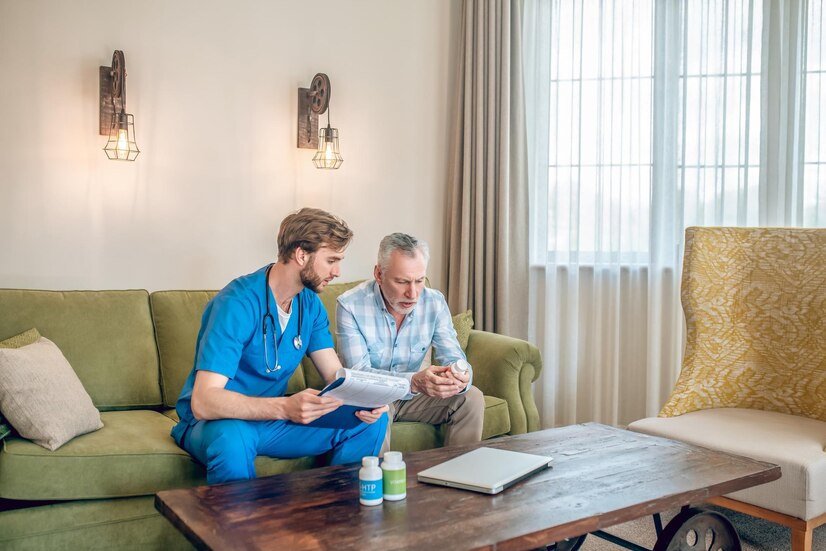When we talk about home medical care we are referring to the type of health care provided by medical professionals that takes place in the patient’s home, when the patient cannot travel to a health center. Let’s see below what this type of assistance can be like:
Advantages Of Home Care For Patients and Medical Professionals
The advantages of home medical care for the patient can be:
- The convenience of not having to travel outside your home.
- Being able to receive more personalized, private, and comprehensive assistance, within the family environment.
- Avoid nosocomial complications (those acquired in the hospital): infections, disorientation…
- More involvement on the part of the patient and/or family members in their health care.
For the medical team, these types of visits allow us to:
See what the patient’s environment is like (something that influences both physical and mental health).
Being able to make assessments of other spheres apart from the medical one (care, biopsychosocial, spiritual care…).
We contribute to reducing the pressure on hospital care.
It allows us to be up to date regarding the use of more efficient technological devices to be informed at all times of the patient’s health status (digitization).
Disadvantages of Home Care
We can identify some drawbacks. One of them could be the geographical location of where we live; if the patient lives very far from large cities, this type of assistance may not be available to them or it may be more difficult.
For healthcare professionals at home visit Holistic Palliative Care specialist. To invest more time with your loved one we have high-quality diagnostic tools that we would have in a consultation.
Who requests it?
It is arranged by the medical team (medicine, nursing, social worker…) the patient
(And the medical team will assess whether it is feasible to make a home visit or you would benefit from another type of resource, for example, an ambulance).
Type of patient: Patients who DO NOT leave home: Either because they have mobility problems, terminal illnesses, do not want to go to consult in person, or have suffered a recent disability (stroke…)
Patients visited in consultation but who require care at home: Because some type of domestic violence is suspected, it has to be decided whether to admit them to a center, if they have a history of falls…
“Fragile” patients, that is, those who require a comprehensive assessment, or caregivers with overload, or because there are architectural barriers. Patients of any age with acute or chronic decompensated illness:
Examples:
- A 40-year-old man with a disabling migraine attack.
- 80-year-old woman with advanced chronic lung disease who has fever, cough, and shortness of breath.
- Time of visit Agreed days before with patient and/or family. On the same day.
Who makes it?
The health professionals are responsible for the patient, whether primary care, mutual insurance, palliative services, or physiotherapists. Your reference medical team or emergency team.
The objective of the visit?
Assess the patient’s health status and establish care strategies with the family member/caregiver. Assess the person’s health status and propose treatments depending on whether it is an acute or chronic problem.
Types of medical treatments Home hospitalization: Intravenous medications and serums, oxygen therapy, sedation… Intramuscular injections, oral medications
Finally, we will comment that, as experts predict at Holistic Palliative Care, can provide a better home assistance and this home health care sector will increase. A fact is due to the progressive aging of the population (with what entails an increase in diseases and health problems) and that society is increasingly “demanding” in terms of the search for a closer, social, and more accessible model of medicine.





